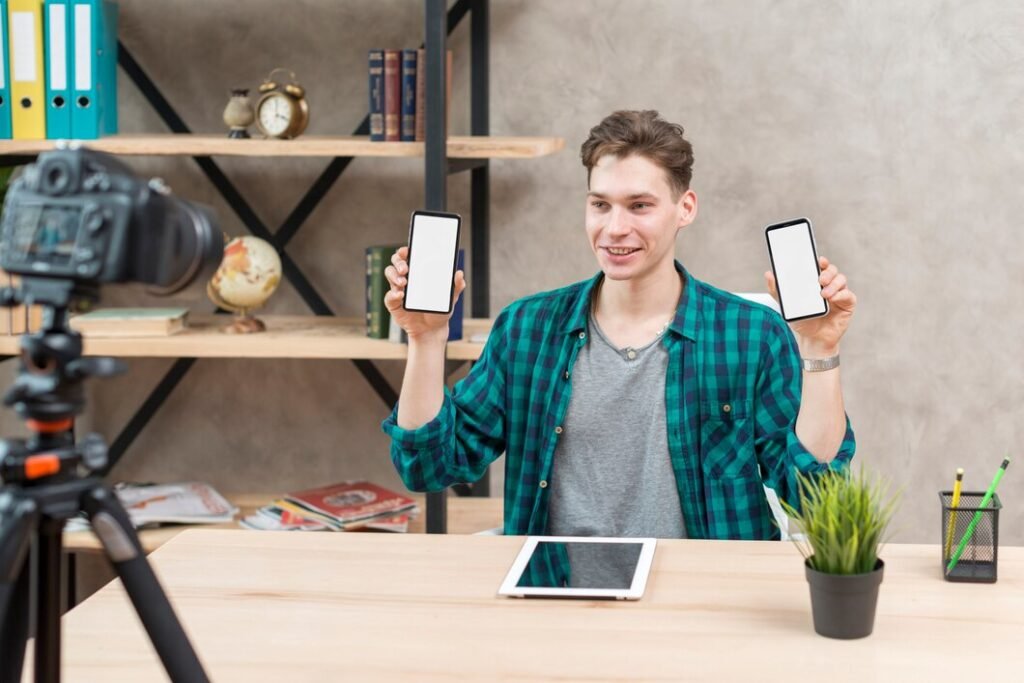Mobile Video Content Creation: Mastering the Art of On-the-Go Filming

The Mobile Content Revolution
The smartphone in your pocket has changed from a single communication tool to a powerful material building studio. With progress in mobile camera technology, expensive equipment or technical expertise is no longer necessary to create professional quality videos. According to recent data, more than 75% of the video content is now consumed on mobile devices, making mobile -friendly videos more important than ever.
Whether you’re an aspiring influencer, small business owner, or creative enthusiast, mastering mobile video content creation can significantly expand your digital presence. At MobileDominate.com, we’ve seen countless creators transform their content quality through simple yet effective techniques that maximize smartphone capabilities.
This comprehensive guide will walk you through everything you need to know to elevate your mobile video content from amateur to professional quality—all using the device in your pocket.
Essential Mobile Video Equipment
Smartphone Selection
The foundation of great mobile video starts with your device choice. While most modern smartphones can capture impressive footage, consider these factors when selecting your filming device:
- Camera capabilities (multiple lenses, resolution options)
- Storage capacity
- Battery life
- Processing power
- Support for external accessories
According to DxOMark’s smartphone camera rankings, top performers include the latest iPhone Pro models, Samsung Galaxy S series, and Google Pixel devices. However, the best camera is the one you have and know how to use effectively.
Must-Have Mobile Accessories
Elevate your mobile video production with these essential accessories:
- Stabilization gear: A quality smartphone gimbal like the DJI OM series or a simple tripod can eliminate shaky footage instantly.
- External microphones: As Soundguys highlights, audio quality often makes the difference between amateur and professional content. Consider lavalier mics for interviews or shotgun mics for general filming.
- Supplemental lighting: Portable LED panels provide flexible lighting options when natural light isn’t sufficient.
- Lens attachments: Wide-angle, macro, or anamorphic lenses can expand your creative possibilities beyond your phone’s built-in options.
- Battery packs: Extended filming sessions demand additional power sources.
Remember that at MobileDominate.com, we emphasize that technique trumps equipment. Start with what you have, and add accessories as your skills develop.
Mastering Mobile Video Composition
Rule of Thirds and Visual Balance
Professional videographers rarely place subjects dead-center. Instead, use your smartphone’s grid overlay (found in camera settings) to apply the rule of thirds:
- Position key elements along the grid lines or at their intersections
- Allow proper “look room” in the direction your subject is facing
- Create visual balance through thoughtful arrangement of foreground and background elements
Movement and Stabilization Techniques
Even with stabilization gear, knowing proper movement techniques is essential:
- Walk heel-to-toe when capturing tracking shots
- Use both hands to hold your device more steadily
- Tuck your elbows against your body for added stability
- Practice “breathing techniques” similar to those used by professional photographers
Framing and Shot Variety
Engaging videos incorporate different shot types:
- Establishing shots: Wide angles showing the environment
- Medium shots: Framing subjects from waist up
- Close-ups: Emphasizing details or emotional reactions
- Over-the-shoulder: Creating connection between subjects
Varying your shots maintains viewer interest and creates a more professional feel to your content.
Optimizing Mobile Video Lighting
Natural Light Mastery
Natural light remains the most flattering and accessible lighting source, but requires understanding:
- Golden hour: Film during the first hour after sunrise or the last hour before sunset for warm, directional lighting
- Window light: Position subjects facing windows for soft, flattering illumination
- Backlighting challenges: Avoid placing subjects in front of bright windows or the sun unless going for a silhouette effect
Artificial Light Solutions
When natural light isn’t available or sufficient:
- Three-point lighting: Create depth with key, fill, and back lights using portable LED panels
- Diffusion techniques: Soften harsh lights using white paper, fabric, or specialized diffusers
- Color temperature management: Match your artificial lights to the ambient environment
As RocketStock’s lighting guide explains, even budget-friendly lighting solutions can dramatically improve your video quality when properly positioned.
Professional Audio Recording for Mobile
Environmental Audio Control
Before recording, always:
- Identify and eliminate background noise sources
- Select locations with favorable acoustics
- Consider recording in the early morning when ambient noise is typically lowest
- Use physical barriers like furniture or your own body to block unwanted sounds
Microphone Placement Techniques
When using external microphones:
- Position lavalier mics 6-8 inches below the chin
- Keep shotgun mics just out of frame but pointed directly at sound sources
- Test audio levels before committing to a full recording session
- Record room tone (silent ambient sound) for each location to use in editing
At MobileDominate.com, our audio tutorials emphasize that viewers will forgive mediocre video quality far more readily than poor audio.
Mobile Video Editing Essentials
Top Mobile Editing Applications
Transform raw footage into polished content with these powerful mobile editing tools:
- LumaFusion (iOS): Professional-grade editing with multiple tracks
- Adobe Premiere Rush (iOS/Android): Cross-platform editing with Creative Cloud integration
- KineMaster (iOS/Android): Feature-rich editing with precise control
- CapCut (iOS/Android): User-friendly editing with advanced features
Editing Workflow Optimization
Establish an efficient editing process:
- Review and organize footage before cutting
- Create a rough cut focusing on story structure
- Refine with precise trimming and transitions
- Add music, sound effects, and color grading
- Finalize with titles, captions, and export optimization
Color Grading on Mobile
Many creators underestimate mobile color grading capabilities:
- Use LUTs (Look-Up Tables) to apply consistent visual styles
- Adjust exposure, contrast, saturation, and white balance
- Create custom presets to maintain visual consistency across content
- Consider apps like VSCO or Lightroom Mobile for additional color control
Storytelling Through Mobile Video
Storyboarding and Planning
Even spontaneous content benefits from basic planning:
- Sketch simple shot sequences before filming
- Consider narrative structure (beginning, middle, end)
- Identify key messages or emotions to convey
- Plan transitions between scenes or topics
Pacing and Editing Rhythm
Effective mobile videos maintain viewer engagement through:
- Varied shot lengths appropriate to content type
- Purposeful editing pace (faster for excitement, slower for emotion)
- Strategic use of jump cuts, match cuts, and smooth transitions
- Music and sound design that complements visual rhythm
Optimizing Mobile Videos for Different Platforms
Platform-Specific Requirements
Each platform has unique specifications:
- Instagram: 1:1 (square), 9:16 (Stories/Reels), or 16:9 (landscape)
- TikTok: 9:16 vertical format with fast-paced editing
- YouTube: 16:9 widescreen with emphasis on higher resolution
- Facebook: Multiple formats supported with attention to autoplay features
- LinkedIn: Professional content often in 16:9 or 1:1 format
Export Settings and Quality Management
Optimize your final videos by:
- Matching resolution to platform recommendations
- Selecting appropriate bitrates for intended viewing conditions
- Including closed captions or burned-in subtitles when necessary
- Compressing efficiently without visible quality loss
Analytics and Continuous Improvement
Tracking Video Performance
Use platform analytics to understand:
- Watch time and audience retention
- Engagement rates (likes, comments, shares)
- Click-through rates on calls to action
- Audience demographics and viewing patterns
A/B Testing Content Variations
Systematically improve your content by testing:
- Different thumbnails and opening sequences
- Various editing styles and pacing
- Call-to-action approaches
- Publishing times and frequency
Your Mobile Video Journey
The barriers to professional video creation have never been lower. With today’s smartphone technology and the techniques outlined in this guide, you have everything needed to create compelling video content that resonates with audiences.
Visit MobileDominate.com for in-depth tutorials, gear recommendations, and community support as you continue your mobile content creation journey. Remember that consistency trumps perfection—the most successful creators are those who regularly produce and iterate, learning from each piece of content they create.
Start filming today, and transform your smartphone into the powerful content creation tool it was designed to be.








